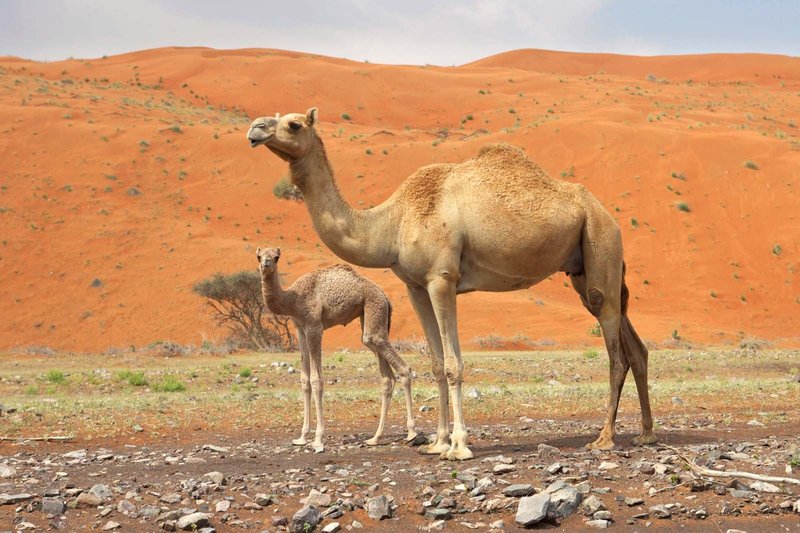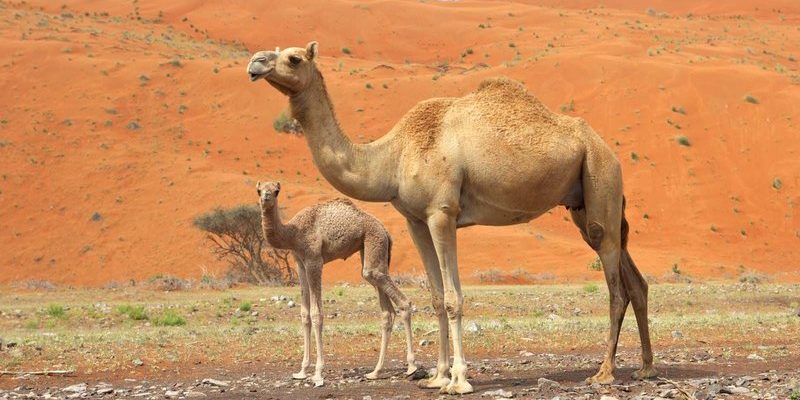
Picture it like this: If you’ve ever seen a mom bird feeding her chicks, you’ll grasp the nurturing instinct that drives camel mothers. Just like that bird builds a nest and protects her young, a camel does everything to keep her calf safe and healthy. With deep bonds, clear communication, and effective parenting skills, camel mothers are truly committed to their offspring. So, let’s dive into the world of camel parenting and explore how these extraordinary animals raise their young in the wild.
The Basics of Camel Reproduction
Camels, like many mammals, have a unique breeding process that begins with a gestation period of about 13 months. This long wait ensures that the calf is well-developed when it arrives. When a female camel (often called a “cow”) is ready to mate, she will signal her readiness through various behaviors, such as vocalizations and increased social interactions.
Once the mating occurs, the female will often seek a secluded area to give birth. This is crucial because camels usually give birth without assistance, and the location helps protect the newborn calf from potential predators. It’s a bit like a runner finding a quiet spot to prepare for a big race—privacy matters!
When the calf is born, it typically weighs around 60 pounds and can stand and walk shortly after birth. This quick mobility is essential for survival in the wild. Calves need to stay close to their mothers, and being able to move right away helps them avoid danger.
How Camel Mothers Care For Their Calves
Camel mothers really shine when it comes to caring for their young. After giving birth, a mother camel will spend a lot of time bonding with her calf. This bond is built through physical closeness and gentle vocalizations. You might say they have their own version of a “baby talk” that helps strengthen their relationship.
One important aspect of caring for their calves is nursing. Camel milk is incredibly nutritious, packed with proteins and fats that support the calf’s growth. Mothers produce milk for about 12-18 months. During this time, the mother guides her calf to water sources and grazing areas, teaching it essential survival skills. It’s akin to how we might take our children to the grocery store to show them what to eat!
Another cool fact? Camel mothers are protective. If a threat arises, such as a predator lurking nearby, the mother will instinctively position herself between her calf and the danger. This fierce maternal instinct ensures the calf’s safety and allows it to grow without fear.
Social Structure and Group Dynamics
Camels often live in herds, and this social structure plays a significant role in raising their young. The herd provides additional protection and resources, making it easier for mothers to care for their calves. In a herd, you’ll find an interesting phenomenon known as “alloparenting.” This is when other females in the group help care for a calf, allowing the mother to take breaks. It’s a bit like having a built-in babysitting service!
Herd dynamics can also affect the calf’s social education. Young camels learn how to interact with other camels and develop social skills by observing the adults around them. They pick up behaviors and understand their place within the group. Imagine a child learning to play by watching older kids at a playground; the same idea applies here.
However, not every herd dynamic is smooth sailing. Sometimes, competition arises between mothers for resources, like food and water. In these situations, a mother may need to be strategic in choosing where to feed and care for her calf.
Teaching Survival Skills
As the calf grows, the mother begins teaching essential survival skills. This includes finding food and water, navigating their environment, and recognizing potential dangers. For instance, a mother will lead her calf to water sources, showing it how to drink safely.
You might be wondering how a camel finds water in a desert environment. Well, camels are incredibly adaptable. They can go long periods without water, but when they do find it, they take advantage. Mothers also teach their calves to eat various types of vegetation, from tough desert grasses to thorny shrubs. This skill is vital for survival in the harsh environments where camels live.
Additionally, social interactions with other camels play a role in learning. Calves will mimic their mothers and other herd members, gradually becoming more independent. It’s a learning-by-doing process that showcases the blend of instinct and experience.
The Importance of Independence
Once a calf reaches about 6 months old, it starts to gain more independence. By this time, it might graze on its own while still staying close to mom. This transition is crucial because it prepares the young camel for adulthood. Learning to be independent isn’t just about survival; it’s also about developing confidence and resilience.
As the calf matures, it will begin exploring further from its mother. This exploration helps the calf build its own understanding of the environment. It’s like when kids start going to school and making friends outside the home—they learn to navigate new challenges on their own.
Mothers remain supportive during this phase but gradually give their calves more freedom. This balanced approach ensures the calf knows how to survive alone when the time comes.
Challenges Faced In the Wild
Raising a young camel isn’t without its obstacles. Predators are a constant threat. Young calves are vulnerable, and mothers must be vigilant over their safety. Animals like lions and hyenas can pose significant risks, so mothers often remain alert and protective.
Another challenge is the availability of resources. In the harsh desert, food and water can be scarce. This makes it imperative for camel mothers to know their territory very well. They must be experts at locating food and water sources, even in the most trying conditions.
Additionally, climate change impacts their habitat, creating more extreme weather conditions. Droughts can make it harder to find food and water, forcing herds to migrate further than usual. These changes can disrupt traditional migration patterns and affect how camels raise their young.
The Long-Term Impact of Camel Parenting
The way camels raise their young has a lasting impact on their calves. Those first few years are critical for developing survival skills and social bonds. A well-cared-for calf is more likely to grow into a strong adult capable of thriving in the wild.
Research shows that camel calves with attentive mothers tend to be healthier and more resilient. This nurturing environment helps them become better foragers and more adept at recognizing dangers. As adults, they contribute to the herd’s survival and well-being, continuing the cycle of life.
Ultimately, the parental strategies of camels demonstrate the intricate balance of nature. It’s a dynamic interplay of nurturing, teaching, and learning that helps ensure the species continues to thrive in the wild.
Camels may have a tough exterior, but their parenting is a beautiful demonstration of care and connection. Every camel calf born into the wild represents the hope and resilience of their species, shaped by the unwavering dedication of their mothers.

